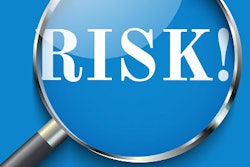
More than 80% of screening breast MRI exams are performed on women for whom the test is not necessarily recommended -- that is, women with a lifetime risk for the disease of less than 20%, according to a study published in the March issue of the Journal of General Internal Medicine.
The finding prompts concern on two levels: that inappropriate breast MRI exams are further burdening an already stressed healthcare system -- and exposing women to overdiagnosis and overtreatment -- and that women who could actually benefit from the exam aren't getting it, wrote the team led by Deirdre Hill, PhD, from the University of New Mexico in Albuquerque.
"Breast MRI use that is not concordant with guidelines ... poses distinct challenges to effective resource allocation in breast cancer screening," Hill and colleagues wrote. "Our data suggest that women with less than 20% lifetime risk based on family history, but who have high breast density, breast atypia, or [lobular carcinoma in situ], undergo MRI at many times the rate of other women, although the harms and benefits in this population are uncertain."
"In contrast, among women who meet professional guidelines for screening MRI, only a fraction received this service; thus, potential benefits may be missed," they added.
Warranted -- or not?
Screening breast MRI is currently recommended for women with 20% or greater lifetime breast cancer risk by the American Cancer Society (ACS), the American College of Radiology (ACR), and the Society of Breast Imaging (SBI). Among women in this risk category, annual MRI in conjunction with mammography has led to increased cancer detection rates compared with mammography alone, Hill and colleagues wrote (J Gen Intern Med, March 2018, Vol. 33:3, pp. 275-283).
Breast MRI's benefits in high-risk women often come with higher false-positive rates, the researchers noted. But the fact that the rates of breast MRI use in women with a 20% or greater lifetime risk of breast cancer are low "could be considered a missed opportunity to utilize a technology that demonstrates promise for early detection," they wrote.
On the other hand, some studies suggest that the use of breast MRI is spreading to lower risk women -- which could be considered "unwarranted use" of the technology, according to the group.
To determine how breast MRI screening is being used in community practice, Hill and colleagues investigated its use among women who did and did not meet guidelines from professional societies for supplemental breast screening. The researchers included data from the Breast Cancer Surveillance Consortium (BCSC) for 348,955 women who received screening mammograms between 2007 and 2014; most of these women (98.8%) had no or one first-degree relative with breast cancer and were therefore not eligible for breast MRI according to guidelines. Of the total cohort, 1,499 underwent screening breast MRI.
The researchers found that 82.9% of these screening breast MRI exams were performed on women who did not meet professional guidelines for the test because of minimal family history risk, and 35.5% of screening MRI scans occurred among women considered to be at low to average breast cancer risk. Among women with less than 20% lifetime risk and no first-degree breast cancer family history, MRI use was higher in those with extremely dense breasts than in those with scattered fibroglandular densities; it was also higher in those with atypia or lobular carcinoma in situ than in women with localized disease.
"Our data suggest use of screening MRI is not in concordance with professional society recommendations ... [and the] continued growth of MRI use in a low-risk population poses issues for effective resource utilization," the group wrote.
Missed opportunity?
So why might women with a lower risk of breast cancer be undergoing breast MRI? There could be a number of reasons, Hill and colleagues noted.
"The supplemental MRI screening of women with low-to-average risk suggests that women and/or their physicians use MRI for reasons not identified by our study," they wrote. "Concerns about mammography effectiveness or breast density notification laws may lead women at lower risk to seek advanced imaging, while physicians may be influenced by women's expectations, reimbursement mechanisms, risk aversion in a litigious legal climate, and confidence in the clinical effectiveness of MRI."
Going forward, the researchers hope the study findings will improve the appropriateness of screening breast MRI delivery.
"We've known that the use of supplemental breast MRI cancer screening has been disseminating across groups of women at various risk levels," Hill told AuntMinnie.com. "Our study found that 83% of screening MRIs were performed in women who did not meet professional society guidelines for screening MRI. So higher risk women who could benefit from breast MRI are not always receiving it, while some low-risk women are."



.fFmgij6Hin.png?auto=compress%2Cformat&fit=crop&h=100&q=70&w=100)





.fFmgij6Hin.png?auto=compress%2Cformat&fit=crop&h=167&q=70&w=250)











